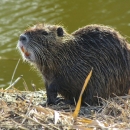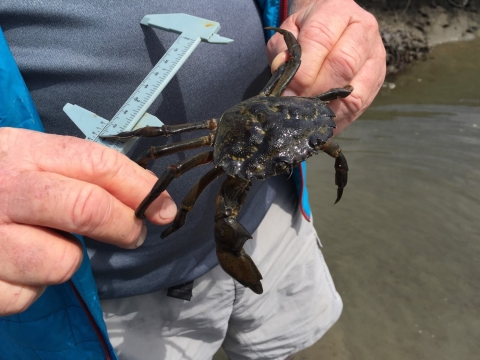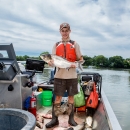What We Do
Aquatic invasive species invasive species
An invasive species is any plant or animal that has spread or been introduced into a new area where they are, or could, cause harm to the environment, economy, or human, animal, or plant health. Their unwelcome presence can destroy ecosystems and cost millions of dollars.
Learn more about invasive species damage wildlife and communities by permanently altering habitats, reducing production of fisheries, decreasing water availability to residential and commercial users, blocking transportation routes, choking irrigation canals, fouling industrial and public water supply pipelines, degrading water quality, and decreasing property values. We help safeguard waterways and communities from invasive species by working with our partners and educating the public.
Protecting Waterways from Harm
Our regional coordinators work closely with the public and private sector partners and our network of conservation offices to conduct on-the-ground control projects and early detection surveillance and monitoring, and provide technical support. The Service also develops regulations to prohibit the importation and some transport of harmful species known as injurious wildlife and serves as a co-chair to the Aquatic Nuisance Species Task Force.
Preventing Introductions
Preventing introductions of potentially harmful species is the most efficient way to reduce the threat of invasive species. Once introduced, an invasive species can spread uncontrollably, harming vital ecosystems and native wildlife and plants and impacting recreation, human, animal, and plant health, the economy, and infrastructure. Listing a species as injurious wildlife prevents its introduction into the United States, and if listed early enough, can prevent an invasion. Almost 300 species were listed before they established, and none have so far established.
Detection and Response
Prevention efforts are the best ways to stop the introduction of invasive species, but early detection and surveillance programs allow the Aquatic Invasive Species Program and its partners to detect new invasions and prevent further spread before numbers become too large to eradicate. The earlier an invasion is detected, the more likely containment and eradication efforts will succeed.
Stopping the Spread
Once an invasive species becomes established, containment and control becomes difficult or impossible, complex, and expensive. America’s lakes, rivers, and wetlands form a connected web of habitat that cross state and regional boundaries. Invasive species can easily travel from one waterway to the next with the current, by hitchhiking on boats and gear, or by improper disposal of fishing bait. Stopping their spread requires close collaboration with other federal agencies, states, industries, and everyone who uses America’s waterways.
Suppressing Infestations
Once an aquatic invasive species is established, it is nearly impossible to completely eradicate it. In these circumstances, invasive species populations can be suppressed or controlled through removal projects, often as part of a larger effort to restore an ecosystem or some other important conservation or societal goal. The most successful control programs, such as sea lamprey control in the Great Lakes, utilize multiple tools and benefit from multiple partners working together.
Our Programs
Our Services
Ecological Risk Screening Summaries
An Ecological Risk Screening Summary, or Risk Summary, provides a rapid evaluation of a species’ potential invasiveness. These evaluations give us, as well as our natural resource stakeholders and the public, a quick way to determine which species are most likely (high risk) and least likely (low risk) to cause damage if they spread outside of their natural range, and which ones have insufficient information to make such a determination (uncertain risk).







